Related Research Articles

Wool is the textile fiber obtained from sheep and other mammals, especially goats, rabbits, and camelids. The term may also refer to inorganic materials, such as mineral wool and glass wool, that have some properties similar to animal wool.

Textile is an umbrella term that includes various fiber-based materials, including fibers, yarns, filaments, threads, different fabric types, etc. At first, the word "textiles" only referred to woven fabrics. However, weaving is not the only manufacturing method, and many other methods were later developed to form textile structures based on their intended use. Knitting and non-woven are other popular types of fabric manufacturing. In the contemporary world, textiles satisfy the material needs for versatile applications, from simple daily clothing to bulletproof jackets, spacesuits, and doctor's gowns.

Felt is a textile that is produced by matting, condensing, and pressing fibers together. Felt can be made of natural fibers such as wool or animal fur, or from synthetic fibers such as petroleum-based acrylic or acrylonitrile or wood pulp–based rayon. Blended fibers are also common. Natural fiber felt has special properties that allow it to be used for a wide variety of purposes. It is "fire-retardant and self-extinguishing; it dampens vibration and absorbs sound; and it can hold large amounts of fluid without feeling wet..."

Wearable art, also known as Artwear or "art to wear", refers to art pieces in the shape of clothing or jewellery pieces. These pieces are usually handmade, and are produced only once or as a very limited series. Pieces of clothing are often made with fibrous materials and traditional techniques such as crochet, knitting, quilting, but may also include plastic sheeting, metals, paper, and more. While the making of any article of clothing or other wearable object typically involves aesthetic considerations, the term wearable art implies that the work is intended to be accepted as an artistic creation or statement. Wearable art is meant to draw attention while it is being displayed, modeled or used in performances. Pieces may be sold and exhibited.

Lenore Tawney was an American artist working in fiber art, collage, assemblage, and drawing. She is considered to be a groundbreaking artist for the elevation of craft processes to fine art status, two communities which were previously mutually exclusive. Tawney was born and raised in an Irish-American family in Lorain, Ohio near Cleveland and later moved to Chicago to start her career. In the 1940s and 50s, she studied art at several different institutions and perfected her craft as a weaver. In 1957, she moved to New York where she maintained a highly successful career into the 1960's. In the 1970s Tawney focused increasingly on her spirituality, but continued to make work until her death.

Sheila Hicks is an American artist. She is known for her innovative and experimental weavings and sculptural textile art that incorporate distinctive colors, natural materials, and personal narratives.
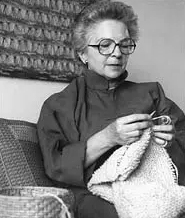
Mary Walker Phillips, was an American textile artist, author and educator. She revolutionized the craft of hand knitting by exploring knitting as an independent art form. Her hand-knit tapestries and other creative pieces are exhibited in museums in the U.S. and Europe. She was honored as a fellow by the American Craft Council (ACC) in 1978.
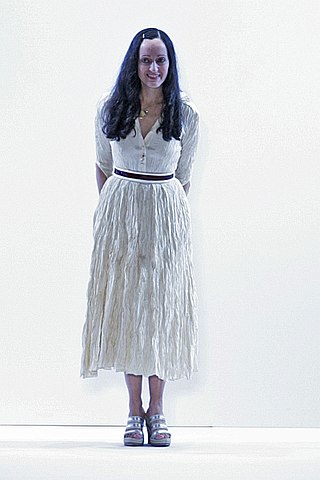
Isabel Toledo was a Cuban-American fashion designer based in New York City. She was widely recognized in the fashion industry for her attention to craftsmanship and the "sophisticated simplicity" of her garments.

Mildred Constantine Bettelheim was an American curator who helped bring attention to the posters and other graphic design in the collection of the Museum of Modern Art in the 1950s and 1960s

Dorothy Wright Liebes was an American textile designer and weaver renowned for her innovative, custom-designed modern fabrics for architects, interior designers, and fashion designers. She was known as "the mother of modern weaving".
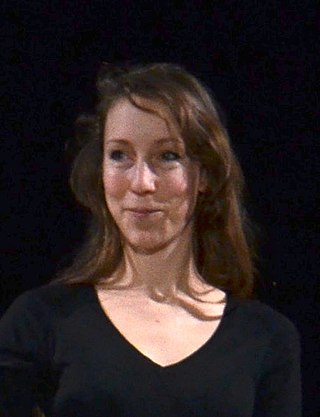
Iris van Herpen is a Dutch fashion designer known for fusing technology with traditional haute couture craftsmanship. Van Herpen opened her own label Iris van Herpen in 2007. In 2011, the Dutch designer became a guest-member of the Parisian Chambre Syndicale de la Haute Couture, part of the Fédération française de la couture. Since then, Van Herpen has continuously exhibited her new collections at Paris Fashion Week. Van Herpen's work has been included in the Metropolitan Museum of Art, the Victoria & Albert Museum, the Cooper-Hewitt Museum in New York and the Palais de Tokyo in Paris.

Trude Guermonprez, was a German-born American textile artist, designer and educator, known for her tapestry landscapes. Her Bauhaus-influenced disciplined abstraction for hand woven textiles greatly contributed to the American craft and fiber art movements of the 1950s, 60s and even into the 70s, particularly during her tenure at the California College of Arts and Crafts.
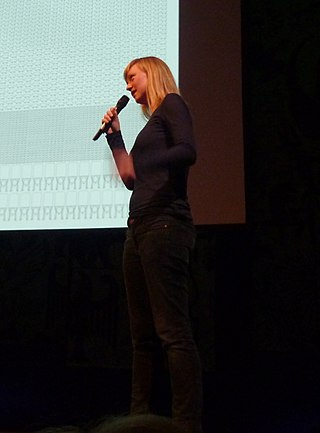
Christien Meindertsma is a Dutch artist and designer.

Berend Strik is a Dutch visual artist working and living in Amsterdam.
Yak fiber is the term commonly used to refer yak fiber wool produced from the coat hair of yaks, a long-haired bovine mainly found in the Himalayan region, Tibetan plateau, and some areas of Mongolia and Central Asia.

Josefine Pola Stout was an American designer best known for creating fine woolen fabrics. Born in Stryi, she studied with Josef Hoffmann at the Kunstgewerbe Schule in Vienna, and designed for the Wiener Werkstätte before she immigrated to the United States in 1925 with her first husband, architect and designer Wolfgang Hoffmann. Wolfgang and Pola Hoffmann became a prominent interior design team that contributed to the development of American modernism in the early 20th century. They dissolved their successful partnership in 1932, when she married popular mystery author Rex Stout. Pola Stout was an influential textile designer after her second marriage. She was executor of Rex Stout's literary estate after her husband's death in 1975.
Nell Znamierowski was an American textile artist.

Lili Blumenau (1912–1976) was an American fiber artist. She was a pivotal figure in the development of fiber arts and textile arts, particularly weaving, in the United States during the mid-part of the 20th century.
Evelyn Anselevicius was an American textile artist best known for her large-scale, geometric woven tapestries, often created using Mexican techniques and traditions.
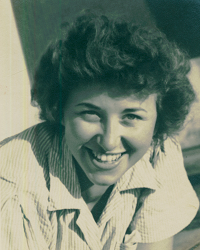
Suzie Zuzek (1920–2011) was an American artist and textile designer whose work was mainly seen in Lilly Pulitzer dresses, textiles and furnishings from the 1960s to the 1980s, and became exclusively associated with the brand until its closure in 1984. In the early 21st century, she was eventually acknowledged as the creator of some of the most widely recognized textiles of the 1960s and 1970s. A retrospective exhibition of her designs, curated in 2019 and shown in 2021 at the Cooper Hewitt, Smithsonian Design Museum, both recognized the impact of her work, and brought her out of obscurity.
References
- ↑ "About us | Claudy Jongstra". www.claudyjongstra.com. Retrieved 9 March 2018.
- ↑ Jongstra, Claudy, 1963- (2005). Claudy Jongstra : matter and meaning. Lauwen, Toon. Amsterdam: Artimo. ISBN 90-8546-040-9. OCLC 64451730.
{{cite book}}: CS1 maint: multiple names: authors list (link) CS1 maint: numeric names: authors list (link) - ↑ "Bloedende handen voor Star Wars – Mode & Mooi – Voor nieuws, achtergronden en columns". De Volkskrant (in Dutch). 28 September 1999. Retrieved 9 March 2018.
- ↑ "Dutch Profiles: Claudy Jongstra". YouTube . 13 October 2012. Retrieved 9 March 2018.
- ↑ "Claudy Jongstra". SFMOMA. Retrieved 9 March 2018.
- ↑ Fashioning felt. Brown, Susan, 1965-, Martens, Christine., McQuaid, Matilda., Dent, Andrew., Cooper-Hewitt Museum. (1st ed.). New York, NY: Cooper-Hewitt, National Design Museum. 2009. ISBN 978-0-910503-89-1. OCLC 314189822.
{{cite book}}: CS1 maint: others (link) - ↑ "Winter 2021/22, curated by Claudy Jongstra". See All This (in Dutch and English). 2 March 2023. ISSN 2468-3981. OCLC 982084530 . Retrieved 16 December 2024.